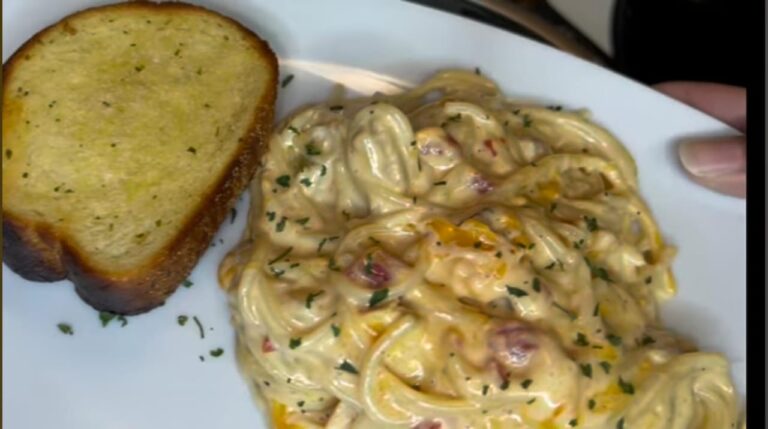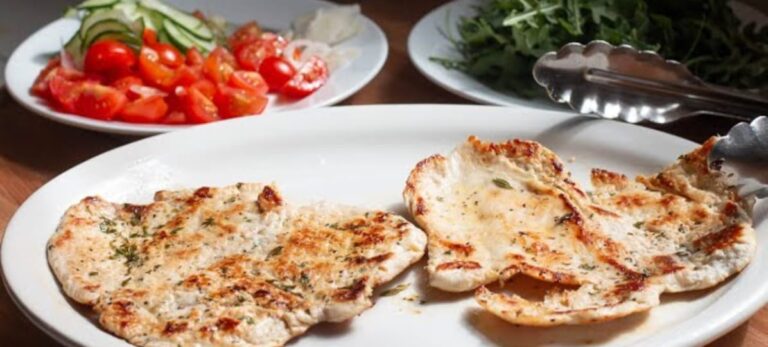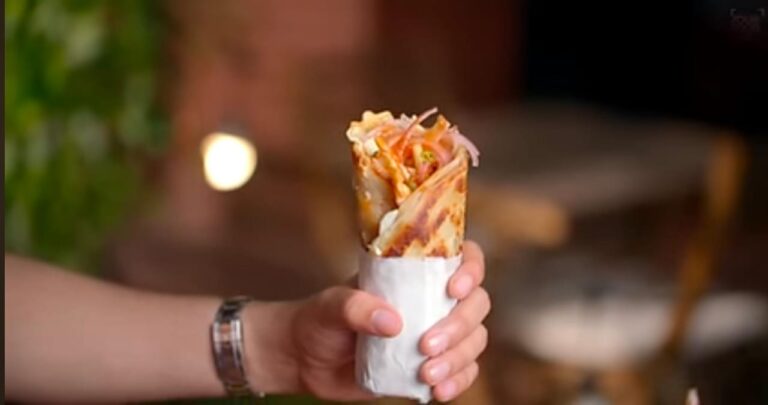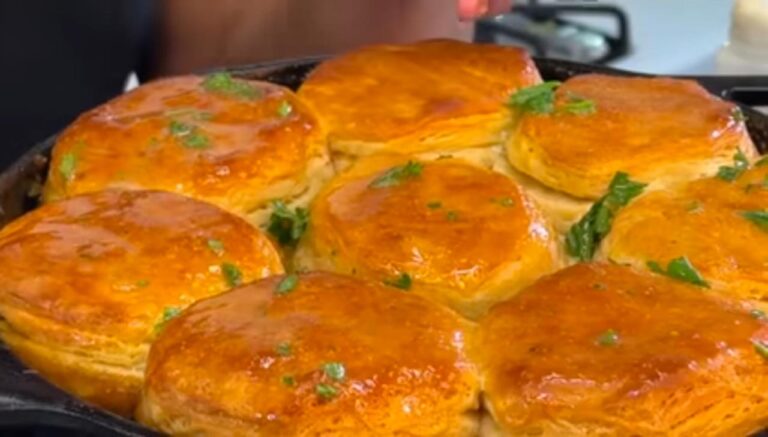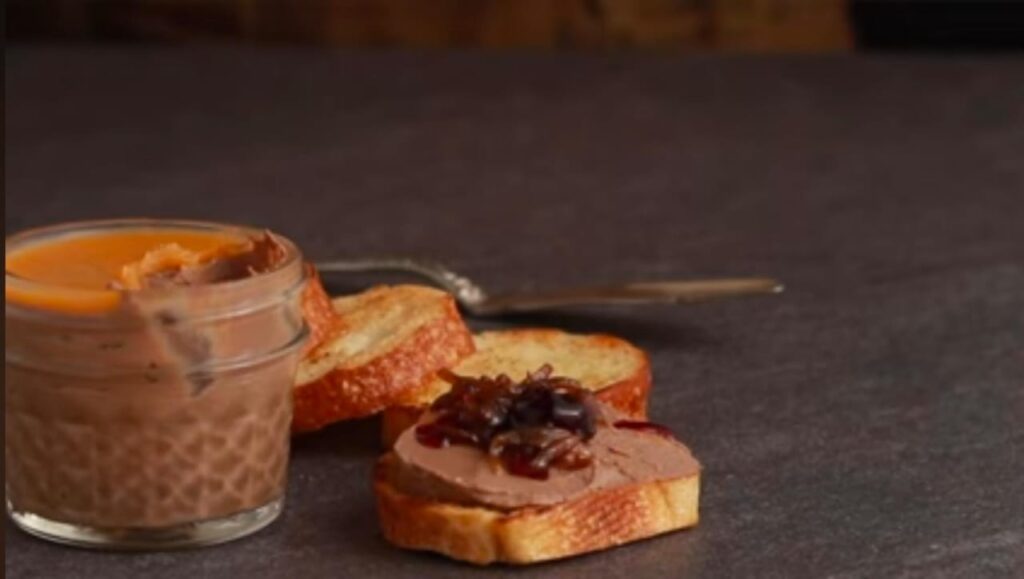
If you don’t want shallots for garnish, reduce the amount to 200g
500g chicken livers
1 Tbsp oil for high heat cooking (like canola)
2 Tbsp butter (1 for the livers and 1 for the shallots)
350g sliced shallots
Salt and black pepper
1/4 cup cognac (or any brandy, port, madeira, wine, or stock)
3/4 cups heavy cream
1 tsp balsamic vinegar
Chicken Liver Pâté recipe
method of making
Today we are continuing the little jar series with the chicken liver pate.
If you’ve had chicken livers before that were rubbery or a pate that was grainy, rest assured that we are going to solve those problems.
I know that liver doneness can be very confusing.
Many chefs tell you to cook them to the pink stage.
But how can that be safe?
I mean what about salmonella?
Today we will answer that question and help you find the right doneness for your livers.
This is a very flexible recipe.
As usual I’ll give you accurate measurements, but please feel free to eyeball everything.
Chicken Liver Pâté recipe
The secret to my pate is a somewhat crazy amount of shallots.
Liver is naturally slightly bitter.
That’s not a bad thing.
Many wonderful things in life are bitter: coffee, chocolate, arugula.
But if you balance that bitterness with sweetness, you get something magnificent and that’s the role of the shallots.
They provide sweetness.
Of course, shallots are a little pricey and hard to peel so if you want to replace them with yellow onions, that’s absolutely fine.
The reason that my amount of shallots looks extra huge is that I want to save some caramelized shallots for garnish.
Chicken Liver Pâté recipe
If you weren’t planning on garnish, you can certainly reduce the amount to about two thirds of this pile.
Set your shallots aside and let’s work on the livers.
Put them in a colander and rinse under cold water.
Then line your cutting board with a paper towel and lay out your livers.
Place another towel on top and press gently to dry them really well.
Chicken Liver Pâté recipe
The drier they are, the more delicious browning we’ll develop, but keep in mind that a liver will never get as dry as a steak.
Some of your livers might still be connected by a very chewy membrane.
I prefer to cut this area out to avoid chewiness later on.
Is this step necessary for serious pureeing machines like Vitamix?
Probably not, but since it only takes about a minute, I never felt that skipping it was worth it.
Set a large skillet over medium high heat.
Add a tablespoons of oil with a high smoke point, like canola or grapeseed, and a tablespoon of butter.
Chicken Liver Pâté recipe
While the pan is heating up, season your livers with salt.
Swirl the pan to distribute the butter evenly.
At the first hint of the butter starting to brown, add the livers salted side down.
Sprinkle the other side with salt and some freshly ground pepper.
Livers have a tendency to splatter, so if you have a splatter screen, you might want to use it and if you don’t have one, you might want to stand back.
Once the first side has a hint of browning, flip the livers over.
You only need about a minute or two on the first side.
Don’t wait for the livers to get really brown and crisp.
This will make them tough and your pate will end up grainy.
Even slightly pale livers will produce a huge amount of brown bits in your pan and that’s where the flavor will come from.
There is no need to turn your livers into rubber balls.
See — this is one of my darker pieces.
Chicken Liver Pâté recipe
Many of them are even less brown than that.
Cook the livers on the other side for a couple of minutes and get them out onto a plate.
I’ll show you how to test them for doneness in a minute.
Meanwhile, add the shallots, a pinch of salt, a tablespoon of butter.
Give it all a stir and lower the heat to medium-low.
While our shallots are cooking, let’s talk about liver doneness.
Doneness is not the color, it’s the temperature.
This chicken liver is 150 inside.
Chicken Liver Pâté recipe
That’s practically well done, yet look at how red it is.
A liver is a very red organ.
To get the livers to look brown inside, you have to cook them way past the safe temperature and all the way into the Sahara desert territory.
Even this 161 degree liver is still slightly pink inside.
165 degrees that you always see recommended for chicken is an overkill.
At 158, you’ll get an almost instant pathogen reduction.
Personally, I am fine with 150F even though it’s a tiny risk.
But if you want to cook them all the way to 160, you’ll still get a perfectly lovely pate as long as you puree it thoroughly.
That’s what’s so great about pate.
Chicken Liver Pâté recipe
If I was eating livers whole, 150F vs 160F would make a huge difference for me.
But in a pate it wouldn’t.
Of course, testing the livers with a thermometer is not very reliable because they are so tiny and it’s hard to insert a thermometer perfectly in the middle.
Cutting one of the livers in half might be your best bet.
Just keep in mind that a 150 degree chicken liver looks roughly like a 130 degree steak.
Even if you want them more done, it’s best to still remove them from the pan at this pink stage and add them back to the pan later on once the shallots are done.
This way they are not exposed to the high heat for too long and won’t toughen as much.
While I was filming all this doneness business, my shallots started to burn a little.
Oops, sorry shallots.
The lesson learned here is that those brown bits leftover from the livers have a tendency to burn pretty quickly, so pay attention and turn down the heat as needed.
But don’t worry, it’s all going to be ok.
I find that caramelized onions and shallots have a great tolerance for burning.
Let’s add a little cognac to deglaze the pan.
This will prevent those brown bits from browning any further and will give our shallots a chance to get tender.
If you don’t have cognac, any brandy will work.
You can also try port, madeira, or wine.
And if you can’t use alcohol, just add some chicken stock.
See how the brown bits dissolved and coated out shallots.
Now we’ll keep on cooking on low heat until the shallots are completely tender and deeply brown.
Chicken Liver Pâté recipe
This will take about 15 to 20 minutes.
I tasted them at this stage and it felt like they needed a little salt and a bit more cooking to get to that jammy stage.
I also noticed that my pan felt a bit dry, so I gave it a splash of olive oil.
Now we are completely tender and jammy.
Let’s give them a bit of acidity with a splash of balsamic vinegar.
You thought I was going to pull out the pomegranate molasses, didn’t you?
Well you certainly could, but I think balsamic vinegar works beautifully here.
I am going to save about a third of my shallots for garnish and deglaze the pan with heavy cream.
If you felt like your livers weren’t cooked enough by your safety standards, this is the time to add them back to the pan and simmer gently with the cream for a few minutes, but I am very happy with my livers, so I am not going to do that.
Scrape up the brown bits and add these creamy shallots to your pan with the livers.
Give them about 5 minutes to cool and then dump into a pureeing machine of your choice.
Chicken Liver Pâté recipe
If you have a high speed blender, like Vitamix, that produces the silkiest pate in the world.
But any blender or food processor will work.
Add 1/4 cup of cream if you like a firmer texture or 1/2 cup of cream if you like a softer texture.
I am using 1/2 cup today.
I know it’s tempting to proclaim it done as soon as it’s mostly pureed, but if you want a really smooth texture, you need to puree for a very long time.
In a vitamix, this means about 2 minutes, but in other machines, I’d say about 5.
Of course, don’t forget to taste for salt, pepper, and acidity.
It should feel very intense now because after chilling, the flavor will become a lot more mellow.
Pour into little jars or ramekins.
Flatten out the top and seal with something.
Normally, I just use a piece of plastic wrap that I press right into the pate to prevent it from oxidizing and turning dark.
But since I still have a whole bunch of fat from that pork confit video that I made last month, I’ll just microwave that and pour on top.
Chicken Liver Pâté recipe
A more typical seal would be chicken fat or clarified butter.
Put the jars in the fridge overnight to let the pate firm up and enjoy!
My favorite way to serve it is on toasted bread with caramelized shallots and black currant jam.
Unfortunately, I don’t have black currant one on hand at the moment, so I am using cherry and it’s absolutely delicious.
Two more topics I want to mention are how to control the texture and how to control the color.
The texture I ended up with has the density of a whipped cream cheese.
In other words, it’s very soft.
If you want to end up with a texture more similar to regular cream cheese, you might want to replace about 1/4 cup of cream with 2 Tbsp of butter.
This will help your pate firm up a lot more during chilling.
Now that I think about it, adding cream cheese could also be very tasty.
And about the color… Even if you don’t overcook your livers, the final color of your pate will be brown unless you add some pink curing salt that contains sodium nitrite.
Restaurants often do it to make it look more appetizing, but I don’t.
Chicken Liver Pâté recipe
The brown color doesn’t bother me and I don’t feel like buying an ingredient that I’ll use very rarely.
Now you have another wonderful thing to put into your little jars.
Here are more culinary tutorials for you to check out and if you are ever in the Boston area, maybe I’ll see you in one of my classes.
